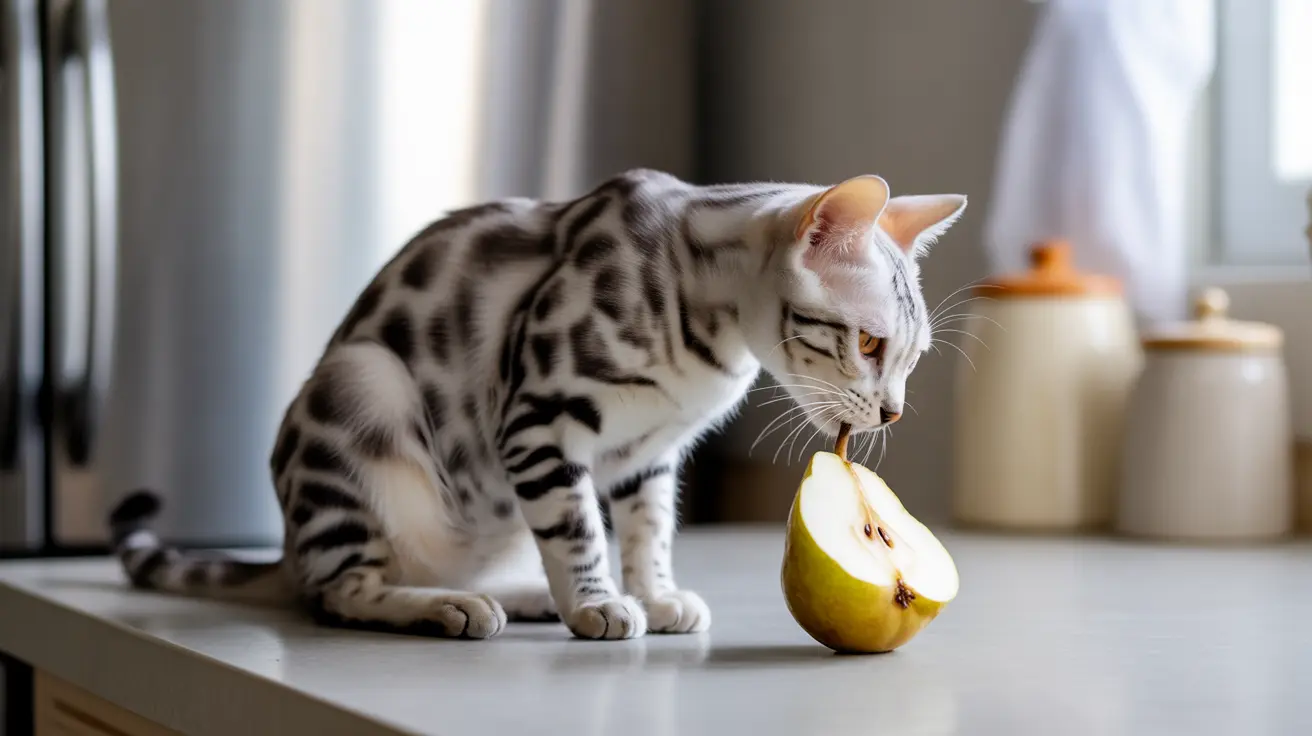Understanding Cats and Pears: The Basics
Cats are obligate carnivores, meaning their bodies are designed to derive nutrition primarily from meat. Unlike humans, cats don't have a biological need for fruits like pears in their diet. However, some cats may enjoy small amounts of pear as a treat, and when prepared correctly, pears can provide minor nutritional benefits.
Benefits of Pears for Cats
While pears shouldn't be a dietary staple for cats, they do offer some nutritional advantages when fed in moderation:
- Dietary fiber for digestive health
- Vitamin C for immune system support
- Vitamin A for eye and skin health
- Potassium for muscle function
- Natural hydration from high water content
Potential Risks and Dangers
Toxic Components
The most serious risks come from certain parts of the pear that must always be removed:
- Seeds (contain cyanogenic glycosides)
- Core
- Stem
- Skin (may contain pesticides)
Health Concerns
Even the safe flesh of pears can pose risks if not properly portioned:
- High sugar content can contribute to obesity and diabetes
- Excessive fiber may cause digestive upset
- Possible allergic reactions in some cats
- Risk of choking on larger pieces
Safe Preparation Guidelines
Follow these steps to safely prepare pears for your cat:
- Wash the pear thoroughly
- Remove all seeds, core, stem, and skin
- Cut into small, bite-sized pieces
- Serve fresh, never canned or sweetened
- Start with a tiny portion to test tolerance
Proper Serving Sizes and Frequency
Moderation is key when feeding pears to cats:
- Limit portions to 1 teaspoon to 1 tablespoon maximum
- Offer no more than once every few weeks
- Treats should never exceed 10% of daily caloric intake
- Monitor for any adverse reactions
Frequently Asked Questions
Can cats safely eat pears, and what parts of the pear should be avoided?
Yes, cats can safely eat pear flesh, but must never consume the seeds, core, stem, or skin. These parts can be toxic or cause choking hazards.
What are the health benefits of feeding pears to cats in small amounts?
Pears provide dietary fiber, vitamins C and A, potassium, and hydration. However, these benefits are minimal, and cats get complete nutrition from their regular cat food.
How should pears be prepared before giving them to a cat to prevent toxicity?
Thoroughly wash the pear, remove all seeds, core, stem, and skin, then cut the flesh into small, manageable pieces. Only serve fresh, raw pear without any additives.
How much pear can I give my cat, and how often is it safe as a treat?
Offer no more than 1 teaspoon to 1 tablespoon of pear, and limit treats to once every few weeks. Treats should make up no more than 10% of your cat's daily caloric intake.
What signs of adverse reactions should I watch for after feeding pears to my cat?
Monitor for vomiting, diarrhea, lethargy, allergic reactions (itching, skin problems), or changes in appetite or behavior. If any symptoms occur, discontinue feeding pears and consult your veterinarian.
Conclusion
While cats can have pears as an occasional treat, they're not a necessary part of your cat's diet. If you choose to offer pears to your feline friend, always prepare them properly, serve in moderation, and monitor for any adverse reactions. Remember that your cat's primary nutrition should come from high-quality cat food specifically formulated for their carnivorous needs.






